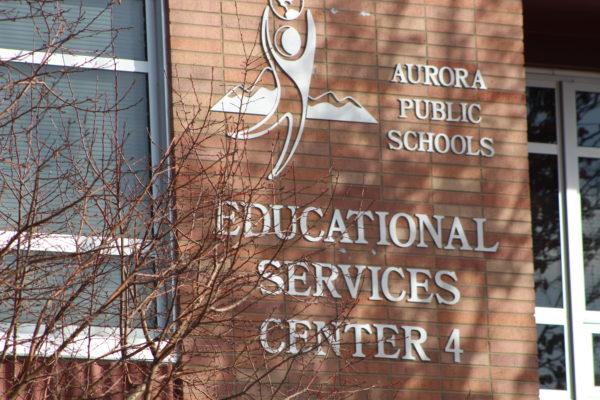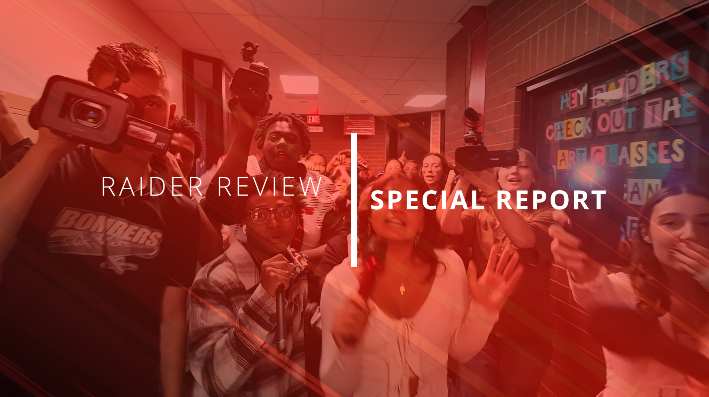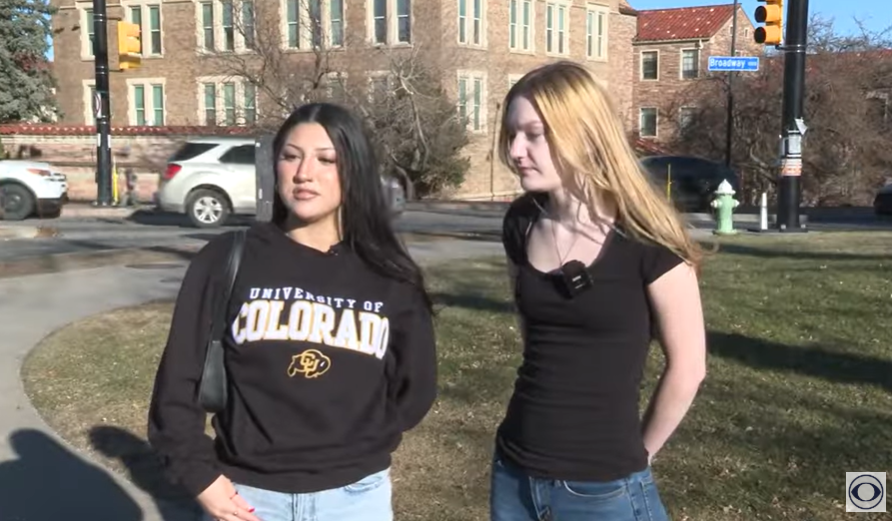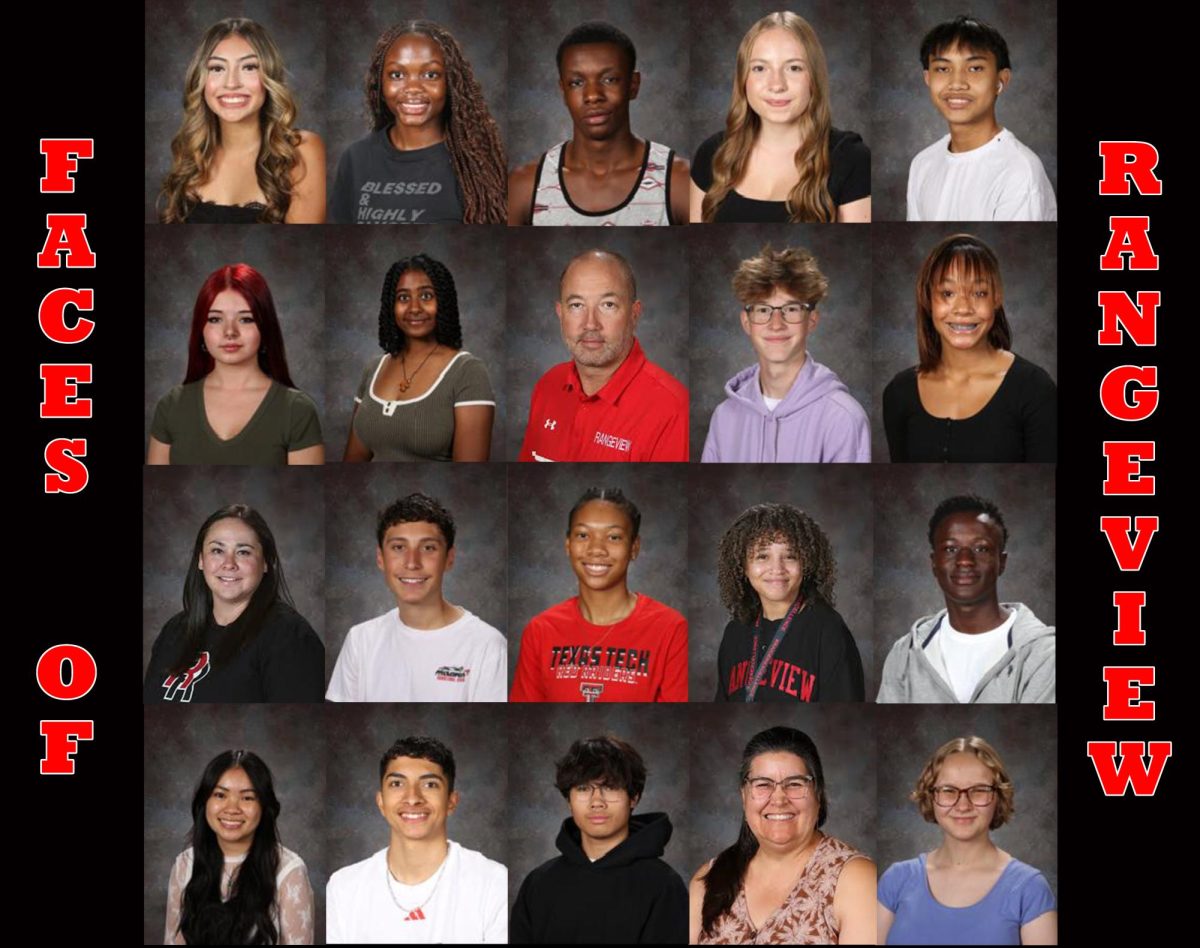Feature Photo By: Andrea Reyna – The Educational Services Center on Peoria serves to oversee the efficiency and flow of APS schools. One of the many problems with the lack of diversity is the inability to pay teacher’s a wage that allows for comfortable living in Aurora.
Integration of race in schools was not a reality until 1954 (Brown v. Board of Education). As a result, there has been a slow process in having the same diversity for the student to teacher ratio.
Many feel as though diversity is rich here in Aurora, with about 63% of our population being white, 16% black, 29% Hispanic/Latino and the rest being Asian and other races.
This diversity is also seen in our school district’s population of students. Within the Aurora Public School (APS) district, statistics provided on most recent data (2015-2016) state that Hispanic students compose 59.4% of students enrolled in the APS, followed by black students (18.5%), white (15.6%) and Asians (5.1%).
Even here at Rangeview, despite having higher numbers of minority teachers than other Aurora high schools, students often find themselves wondering whether the APS Board is doing what they can to achieve greater staff diversity.
Many expressed that they believe a diverse staff is important in developing connections with students and offer a different experience in the classroom.
“I think if students grow up and they see only one type of teacher year after year after year, it kind of subtly in their mind tells them that maybe that can’t do that or maybe that’s not something they’re capable of doing,” said Mr.Carter, an English teacher here at Rangeview. “So I think seeing the diverse group of people doing things like teaching them, is helpful over time.”
Although there are local solutions to address staff diversity, it is important to remember that this is not only a problem here in Aurora or Colorado, but rather it is a trend that can be seen across the entire nation.
In fact, from the years 2003 to 2012, the percentage of white students has dropped nationally. Even though the population of minority students has increased by 6%, the population of minority teachers has remained relatively stagnant.
Chief Personnel Officer for APS, Damon Smith, stated,” Attempting to diversify the workforce in Aurora has been a priority for the entirety of the time that I have been working for the school district, which is going for 11 years now.”
This brings us to a question: what exactly is prohibiting the growth of minority teachers, not only in Aurora, but across the nation?
Negative connotations with the teaching profession.
One of the barriers happens to be implicit. There is not much respect towards teachers, as often portrayed in shows and movies. There is also the probability of minority students wanting choose a better-paying profession, despite their heart’s desires.
It has also taken years for teaching to not be seen as a job solely for women, and the progression has been in raising teaching as a practical profession. As a result, national trends show that students as a whole have lost interest.
Junior Yaritza Perez talked about the negative perspectives she believes many minorities have with teaching.
Perez said, “They always try to aim for that higher goal and I feel like in those situations to get more minority staff they can demonstrate the being a teacher isn’t that bad, que es algo grande también”, which translates to “that it is also something big.”
Her statement reflects a common belief that is shown in communities across the nation. The solution to the lack of interest in the profession is unclear.
Even now, there has been a significant decrease in teacher-prep program enrollment, from 700,000 to roughly 475,000 in 2014. Program completers on the other hand, have been as low as 175,000 in 2014.
Smith explained that the solution lies in counteracting these negative projections. Smith said, “What we all have to do, is work together to… elevate the career of teaching to a level where we can get back to the point where it is recognized as a viable and meaningful career, thus engaging more people in going into that as a profession.”

Financial Barriers
Adding on to the negative perceptions of being a teacher is the financial aspect. Paying for the education is a challenge, especially when there isn’t security in the ability to be able to pay it back.
Smith said, “The cost of teacher prep programs has gone up, but part of the work I do along with members of my team is let people know that there are lots of [financial] opportunities out there.”
An example he gave was of a teacher forgiveness program that he said almost every school in Aurora qualifies for.
This serves to open up opportunities and is an attempt to expand to a larger pool of teachers to choose from. It is easy to look over the fact that few minorities are actually looking into the teaching career, and place the blame only on the APS administration. However,The cost of education and teacher programs is only one financial barrier.
Relocation
Here in Colorado, most teachers are individuals from out-of-state. This of course is a very difficult decision to make as it comes with the cost of moving (usually) across the country.
Smith said, “It’s unfortunate that we have situations where individuals who want to teach in the [APS], when we look at the amount that we’re able to pay them, they can’t even afford to live within the city of Aurora.”
This is the reality in which teachers looking to teach in Aurora find themselves with. Even if they are willing to work with our community, with our students, they simply cannot afford the high prices of rent and house bills with a teaching profession because of the house market in Colorado.
Aurora Public Schools is making a great effort to come up with solutions to relocation problems, and according to Smith, “we are currently exploring and trying to figure out, what makes sense, and most importantly, what can we financially afford to do.”
Teacher-student relationships
With less students and individuals looking into a career of teaching, whether for financial reasons or for negative perceptions on the profession, there is a much smaller pool of candidates to choose from.
The teacher shortage, not just in Colorado but across the nation, becomes a barrier, and in turn school districts switch their focus to getting the ‘best’ teachers they can to put into their classrooms.
There are benefits to having minority teachers in the classroom.
Mr. Carter said, “It makes us more worldly and makes us more open-minded overall. It makes us more willing to accept others.”
It is a belief of some, that while minority teachers do bring different experiences to the classroom, ethnicity isn’t necessary in terms of establishing teacher-student relationships and connections.
Mr. Melendez, social studies teacher here at Rangeview, explained that he never had a teacher who could relate to his Puerto Rican background and culture. However, he expressed, “Regardless of your ethnicity, that’s just one way to connect with a kid. If you’re an outgoing person, that seeks relationships with students, in different ways and tries to connect with them, you know, that to me is more valuable than just a certain ethnicity. That’s just one way, one aspect of you know of being human.”
His belief is shared with Aurora Public Schools, and with very few teacher candidates to choose from because most of them are white, it is difficult to increase diversity within the school district.
“They have to be committed to our students. We want people who want to be here. We want people who want to work with the Aurora community,” said Smith when describing what the APS is currently looking for in teachers.
The entire nation appears to be struggling with diversifying staff in the education field. Negative perceptions, along with financial barriers and the belief that there are other ways to connect with students are only some of the challenges that the Department of Education faces.
However, there is promise of efforts being implemented. Though it may sound surprising, Aurora has outpaced the national and state growth of minority teachers. Colorado has a percentage in Latinx teachers that is larger than both national and state rates. The percentage of black teachers also surpasses the state of Colorado by a great deal. It may be a small change, but even now, with recently elected APS board members, their diversity and plans promise changes in the community.




